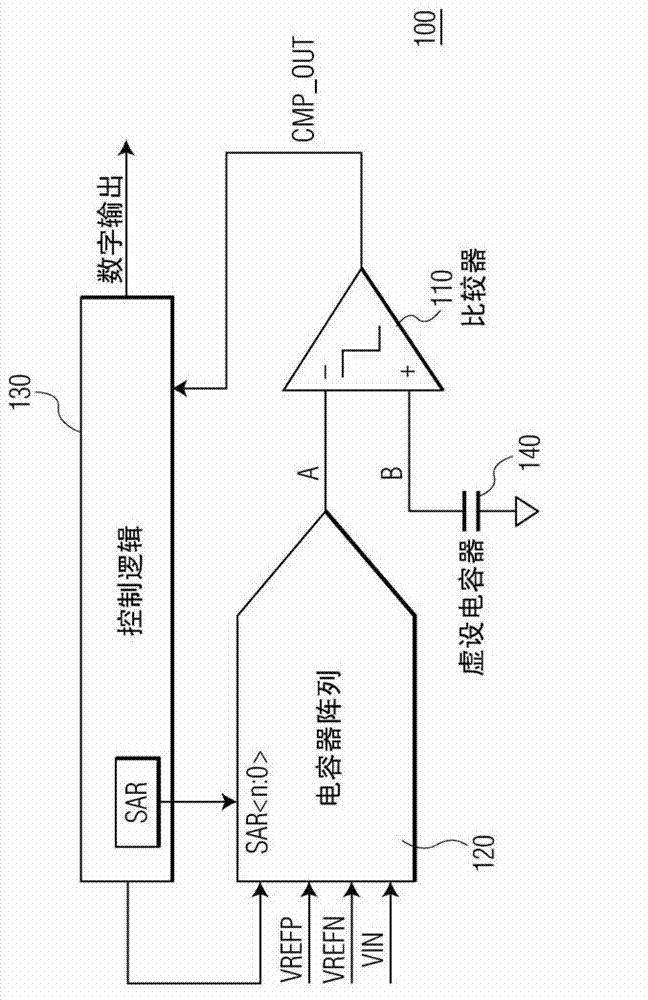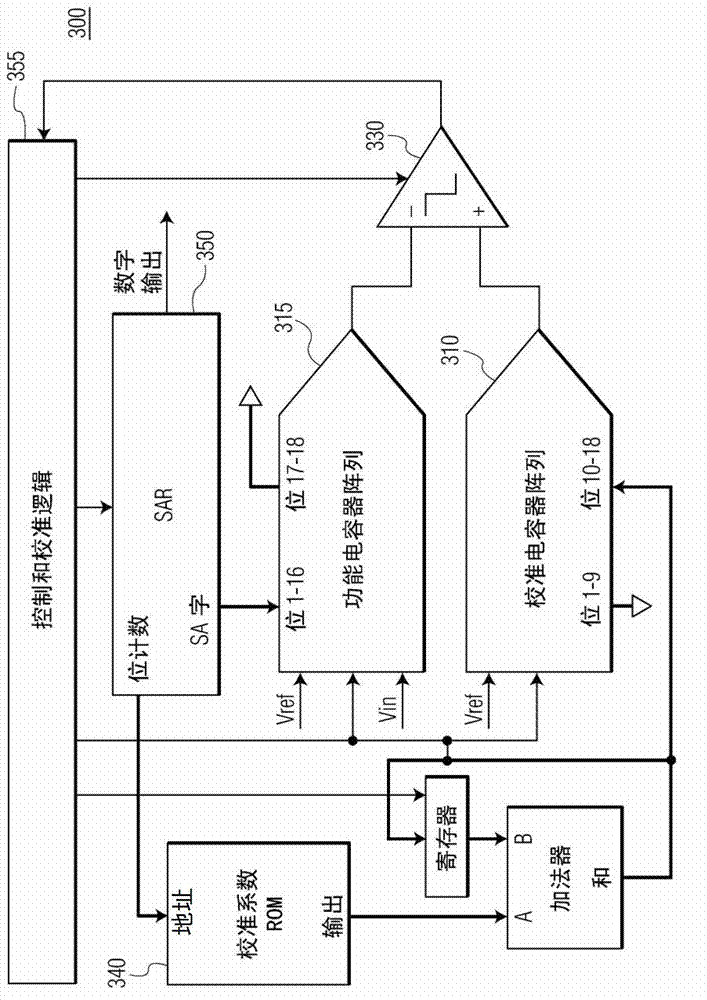Input-independent self-calibration method and apparatus for successive approximation analog-to-digital converter with charge-redistribution digital to analog converter
An analog-to-digital converter, self-calibration technology, applied in the direction of analog/digital conversion calibration/test, analog/digital conversion, code conversion, etc., can solve problems such as mismatch drift, signal-to-noise ratio and effective bit degradation of distortion rate
- Summary
- Abstract
- Description
- Claims
- Application Information
AI Technical Summary
Problems solved by technology
Method used
Image
Examples
Embodiment Construction
[0023] In an embodiment according to the invention, the calibration process is divided into two steps: error detection and error correction.
[0024] A. Error detection:
[0025] Figure 4 A block diagram of a SAR ADC 400 with self-calibration circuitry according to the present invention is shown. SAR ADC 400 includes comparator 410 , functional capacitor array 420 , calibration capacitor array 430 , control logic 440 and calibration logic 450 . Analog input voltage "V IN ", positive reference voltage "V REFP ” and negative reference voltage “V REFN is provided to both the functional capacitor array 420 and the calibration capacitor array 430 under the control of the control logic 440 and the calibration logic 450 to generate the binary search voltage and the error correction voltage, respectively. The binary search voltage is generated by the functional capacitor array 420 The reference voltage used to gradually approach the analog input voltage, where the latter step si...
PUM
 Login to View More
Login to View More Abstract
Description
Claims
Application Information
 Login to View More
Login to View More - R&D
- Intellectual Property
- Life Sciences
- Materials
- Tech Scout
- Unparalleled Data Quality
- Higher Quality Content
- 60% Fewer Hallucinations
Browse by: Latest US Patents, China's latest patents, Technical Efficacy Thesaurus, Application Domain, Technology Topic, Popular Technical Reports.
© 2025 PatSnap. All rights reserved.Legal|Privacy policy|Modern Slavery Act Transparency Statement|Sitemap|About US| Contact US: help@patsnap.com



